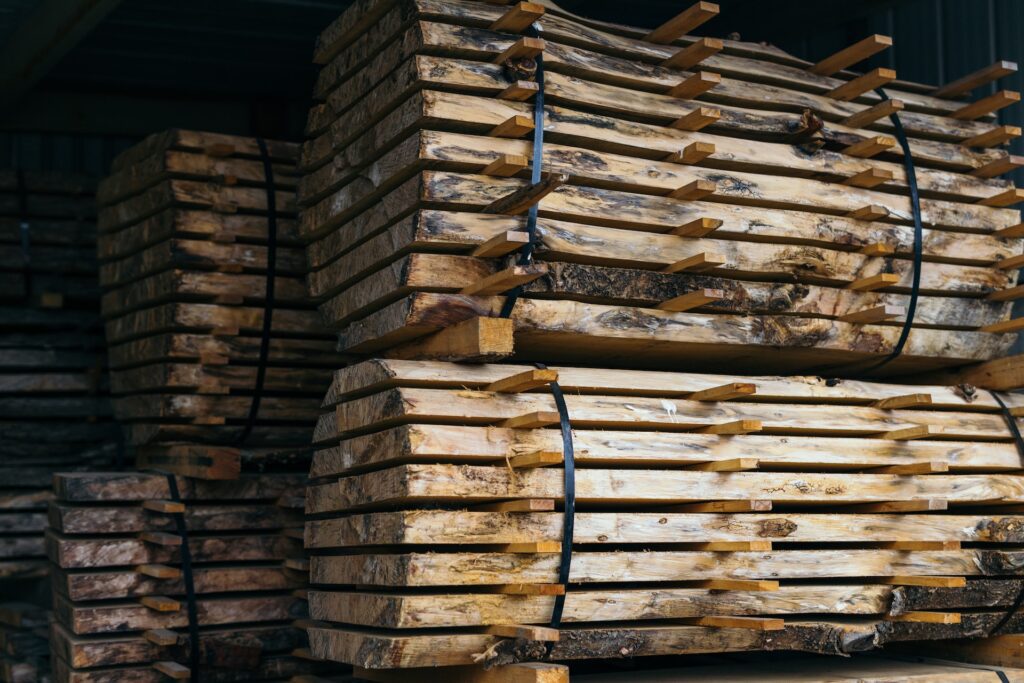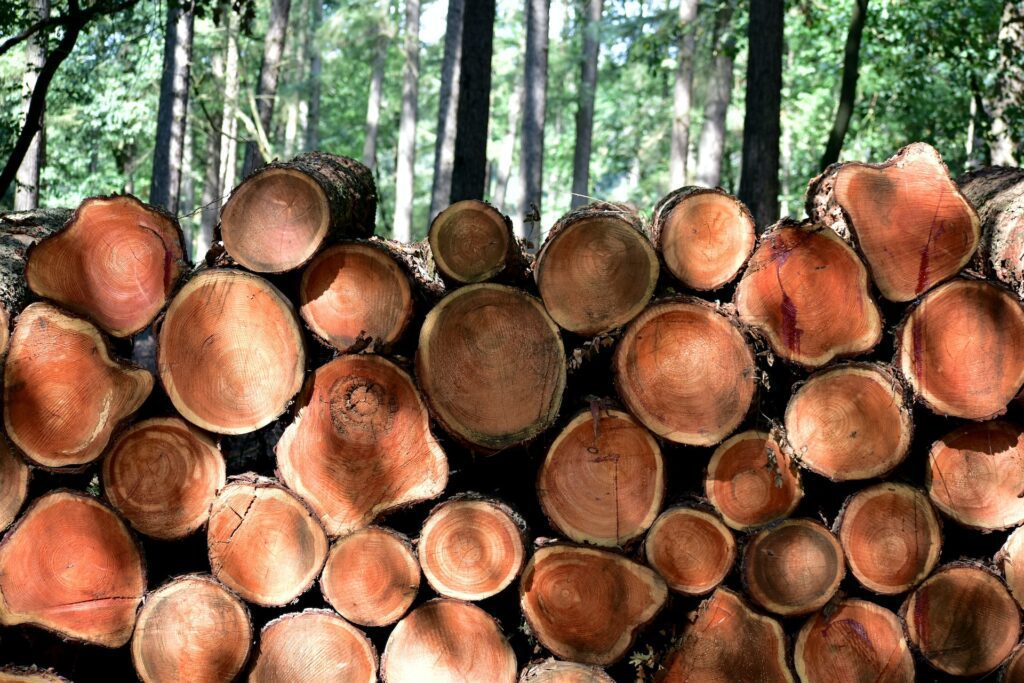
During the COVID-19 pandemic, lumber prices rose rapidly because of shortages caused by prolonged supply chain issues and higher buyer demand. However, these prices have since returned to normal levels as housing demand has cooled somewhat. The construction industry is the main source of demand for softwood lumber throughout the U.S., which means that the number of new houses that begin development is an important metric in the lumber market.
At the moment, the U.S. housing market is complex and faces some uncertainties during the year ahead. Understanding what these issues are makes it easier to determine if lumber prices will drop further in 2023 or if they will continue to rise. In this guide, you’ll learn more about what the industry believes will happen with lumber prices for the rest of the year.
Will Lumber Prices Go Down in 2023?
In the months following the onset of the COVID-19 pandemic, businesses were starting to shut down to keep the pandemic from getting out of control. Over the next few months, it became clear that the economy would be damaged significantly since people were out of work and COVID-19 was starting to create issues with the supply chain and a wide range of different industries.
In March 2020, the fed funds rate was cut to zero, which meant that borrowers were able to purchase homes and take out other loans at historically low interest rates. The effect was immediate. Buyers flooded the market to buy homes at every price range.
Throughout the rest of 2020 and 2021, home values increased at a rapid rate. At the same time, many new homes were being built in an attempt to meet the higher demand. Lumber was unable to be sourced quickly enough, which is part of the reason why a lumber shortage occurred and prices surged.

Factors Driving Lumber Prices
There are several factors that drove lumber prices higher over the past few years, the primary of which include:
- Low interest rates and increased housing demand
- Pandemic-related shifts in consumer preferences
- Increased demand for second homes
When the 2008 recession occurred, the mortgage crisis at that time caused new home starts to drop considerably. In 2009, housing starts fell to the lowest level seen since this metric was introduced in 1959. Even though the real estate industry consistently improved over the next decade, demand wasn’t that high, which kept lumber prices low.
By the time the COVID-19 pandemic began, numerous sawmills throughout Canada and the Pacific Northwest had closed. Once interest rates dropped and buyer demand increased, there weren’t enough sawmills open to provide the housing industry with the amount of lumber it needed. There was also a shortage of homes on the market at the time, which meant that demand wasn’t even close to being met.
COVID-19 caused consumer preferences to shift considerably as well. After the 2008 financial crisis, many people chose to live in apartments without automatically wanting to move over to homeownership. Once the pandemic started and businesses began allowing employees to work from home, apartments became less appealing because of the need for more space. Since interest rates were low when consumer preferences changed, it caused buyer demand to spike.
Keep in mind that it wasn’t just people living in apartments who wanted to purchase a home for the first time that resulted in higher buyer demand. Because the buying environment was highly appealing at the time, many existing homeowners chose to move to a larger home. It was also common for homeowners to purchase second homes that would serve as vacation properties. With such high demand, it was impossible for lumber prices to remain the same. During the initial year of the pandemic, plywood prices increased from $400 to $1,500 for every thousand square feet. These increases were reflected in many types of construction materials.

Impact of Lumber Prices on the Housing Market
High lumber prices created several issues in the housing market. While new homes need to be built to match the relatively high demand that still remains, the cost of new home construction is very high, which pushes many developers away. However, the main impact on the market is that there’s a lumber supply shortage, which is an issue that can’t be easily fixed.
Even though demand and prices have been high in the real estate market since the beginning of the pandemic, lumber exports from Canada are lower than they were before COVID-19. New homes can’t be built quickly because there isn’t a large amount of lumber available for developers to buy.
The lumber supply chain is also known to be highly inelastic because of the lengthy lifecycle that occurs when obtaining wood. It takes around 25-40 years for softwood lumber to reach maturity. This timeline begins at the moment the tree is planted to the moment it’s felled. In the event that there was a large supply of trees that sawmills had access to, it takes years for sawmill capacity to be built.
The fact that the lumber supply hasn’t been able to meet demand is one of the top reasons why home prices have increased considerably since March 2020. In the months between March 2020 and June 2022, prices for single-family homes increased by upwards of 43%. Since that time, prices have leveled off somewhat because of the increase in interest rates.
Keep in mind that many developers are also being tasked with constructing larger homes. When buyer demand increased in the months following the COVID-19 pandemic, new and existing homeowners began searching for properties that had a higher amount of square footage as well as large lots. In 1960, the average square footage for a new home was less than 1,400 square feet. However, the average square footage of a modern home is higher than 2,000 square feet.
Even first-time buyers are no longer interested in smaller starter homes. While homes are getting larger, the number of people living in these homes has dwindled. In 1960, the average number of people living in a home was 3.3. Today, the average household is at 2.6 people. In the coming years, prices should begin to decrease. Since interest rates have risen, buyer demand is no longer as high as it once was.
Will Lumber Prices Drop in 2023?
There are several reasons why lumber prices may decrease throughout 2023, which include everything from lower buyer demand to higher lumber supply. In fact, an increase in lumber supply throughout the first five months of 2023 has caused lumber prices to drop closer to pre-pandemic levels. In recent months, housing completions have been higher than they were over the past few years.
Wholesalers also have a sufficient supply of lumber, which is causing supply to get somewhat closer to fulfilling demand. Since buyer demand is no long as high as it once was, less housing projects are demanding lumber. One factor that might impact lumber prices in the opposite direction is the potential for homeowners to switch over to renovations that will help increase the property’s value. This might cause demand to outstrip supply again.
Today, lumber prices are nowhere near their high of $1,481 per thousand board feet, which occurred in May 2021. In July 2022, prices were still at $725 per thousand board feet. However, prices have dropped considerably over the past eight months. At the beginning of the year, lumber prices dropped below $400 per thousand board feet. While prices would increase to around $524 by the end of January, they have since dipped under $400 and are currently at $344 per thousand board feet.
During the fall months, the building season is at its peak, which is when there’s a good chance that there won’t be enough lumber to meet demand. It’s difficult to predict exactly how lumber prices will move throughout the rest of the year and into 2024. The potential for a long-term increase in lumber prices depends on what happens to the housing demand. If interest rates level off and housing demand remains high, lumber prices could start to increase again.

Conclusion
The COVID-19 pandemic substantially altered the availability and pricing of lumber. While prices are currently dropping and are relatively close to pre-pandemic levels, there are several factors that determine what happens with pricing over the coming months. During the peak of the building season, there’s a chance that a lumber shortage will occur, which means that prices will once again increase.
In the event that lumber prices drop, home values might also decrease, which should increase home affordability across the U.S. Given the current trends in the real estate and lumber industries, it’s likely that lumber prices will experience a modest drop by the end of 2023.